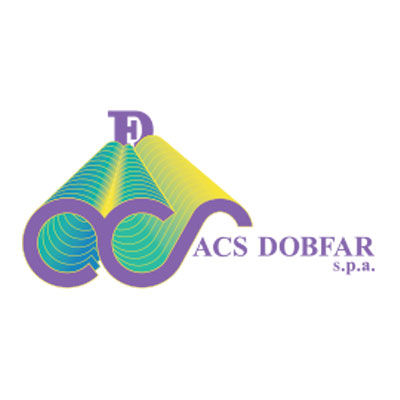预约演示
更新于:2025-10-14
Cefepime/Zidebactam
更新于:2025-10-14
概要
基本信息
原研机构 |
非在研机构- |
权益机构- |
最高研发阶段申请上市 |
首次获批日期- |
最高研发阶段(中国)临床3期 |
特殊审评快速通道 (美国)、合格传染病产品 (美国) |
登录后查看时间轴
结构/序列
分子式C19H24N6O5S2 |
InChIKeyHVFLCNVBZFFHBT-ZKDACBOMSA-N |
CAS号88040-23-7 |
查看全部结构式(2)
关联
7
项与 Cefepime/Zidebactam 相关的临床试验NCT06806995
A Single-center, Open-label, Study Evaluating Safety and Pharmacokinetics of Single Doses of Zidebactam-Cefepime and Metronidazole Alone or in Combination Utilizing a 3-Period, Crossover Study Design
This is a Phase I, Single-Center, Open-Label study evaluating the safety and pharmacokinetics of single doses of ZID-FEP and metronidazole alone or in combination utilizing a 3-period, crossover study design. Thirty eligible male and female healthy adult subjects will participate in the study and receive single doses of (1) ZID-FEP 3g IV (ZID 1 g plus FEP 2 g) administered over 1 hour (h); (2) metronidazole 0.5 g IV alone administered over 1 h; and (3) metronidazole 0.5 g IV over 1 h, followed by ZID-FEP 3g IV over 1 h over 3 treatment periods separated by a 48 h washout period.
开始日期2025-01-21 |
申办/合作机构 |
CTR20233796
一项在中国健康受试者中评价FEP-ZID的药代动力学、安全性和耐受性的随机、双盲、安慰剂对照、单次给药I期研究
本研究的主要目的是: 在中国健康受试者中评价3 g头孢吡肟-zidebactam(FEP-ZID)单次静脉注射(IV)给药的药代动力学(PK)。 本研究的次要目的是: 在中国健康受试者中评价3 g FEP-ZID单次IV给药的安全性和耐受性。
开始日期2024-05-10 |
申办/合作机构  Wockhardt Bio AG Wockhardt Bio AG [+2] |
NCT04979806
A Phase 3, Randomized, Double-blind, Multicenter, Comparative Study to Determine the Efficacy and Safety of Cefepime-zidebactam vs. Meropenem in the Treatment of Complicated Urinary Tract Infection or Acute Pyelonephritis in Adults
This is a Phase 3, randomized, double-blind, multicenter, non-inferiority study to evaluate the efficacy, safety, and tolerability of FEP-ZID vs. meropenem in the treatment of hospitalized adults with cUTI or AP.
Approximately 528 hospitalized adult subjects (≥ 18 years of age) diagnosed with cUTI or AP will be enrolled in the study. The diagnosis of cUTI or AP will be based on a combination of clinical symptoms and signs plus the presence of pyuria. The total duration of treatment with study drug is 7 to 10 days. Each subject must remain hospitalized during the study drug treatment period; no outpatient parenteral antibiotic therapy is allowed.
Approximately 528 hospitalized adult subjects (≥ 18 years of age) diagnosed with cUTI or AP will be enrolled in the study. The diagnosis of cUTI or AP will be based on a combination of clinical symptoms and signs plus the presence of pyuria. The total duration of treatment with study drug is 7 to 10 days. Each subject must remain hospitalized during the study drug treatment period; no outpatient parenteral antibiotic therapy is allowed.
开始日期2022-08-28 |
申办/合作机构  Wockhardt Ltd. Wockhardt Ltd. [+1] |
100 项与 Cefepime/Zidebactam 相关的临床结果
登录后查看更多信息
100 项与 Cefepime/Zidebactam 相关的转化医学
登录后查看更多信息
100 项与 Cefepime/Zidebactam 相关的专利(医药)
登录后查看更多信息
20
项与 Cefepime/Zidebactam 相关的文献(医药)2025-09-02·EXPERT OPINION ON INVESTIGATIONAL DRUGS
Antibiotics and non-traditional antimicrobial agents for carbapenem-resistant
Acinetobacter baumannii
in Phase 1, 2, and 3 clinical trials
Review
作者: Romanos, Laura T. ; Tzvetanova, Iva D. ; Voulgaris, Georgios L. ; Falagas, Matthew E. ; Kontogiannis, Dimitrios S.
INTRODUCTION:
Carbapenem-resistant Acinetobacter baumannii (CRAB) infections have become common in healthcare settings worldwide, yet current therapeutic options are limited. A pipeline of new antibiotics and non-traditional antimicrobial agents is being developed to address the urgent need for efficacious therapeutic options for patients with CRAB infections.
AREAS COVERED:
At the time of this writing, 13 traditional antibiotics are in clinical development for CRAB infections, some with a novel mechanism of action. Specifically, 9 antibiotics are in Phase 1 (R-327, xeruborbactam/QPX-7728, upleganan/SPR-206, MRX-8, QPX-9003, zifanocycline/KBP-7072, apramycin/EBL-1003, zosurabalpin/RG-6006, and ANT-3310), two in Phase 2 (BV-100, OMN-6), and two in Phase 3 (zidebactam/WCK-5222, funobactam/XNW-4107) clinical trials. Additionally, there are six non-traditional antimicrobial agents in Phase 1 or 2 clinical trials for treating CRAB infections. In particular, two monoclonal antibodies (TRL-1068, CMTX-101), a phage therapy (Phagebank), an immune-modulating agent (recombinant human plasma gelsolin/Rhu-pGSN), a microbiome-modulating agent (SER-155), and an engineered cationic antibiotic peptide (PLG-0206).
EXPERT OPINION:
Several agents with promising characteristics against CRAB infections are in clinical development (Phases 1, 2, and 3). The urgent need for therapeutic options against CRAB infections necessitates optimizing efforts and time for introducing successfully studied agents into clinical practice.
2022-06-29·JOURNAL OF ANTIMICROBIAL CHEMOTHERAPY2区 · 医学
Inoculum effects of cefepime/zidebactam (WCK 5222) and ertapenem/zidebactam (WCK 6777) for Enterobacterales in relation to β-lactamase type and enhancer effect, as tested by BSAC agar dilution
2区 · 医学
Article
作者: Woodford, Neil ; Chaudhry, Aiysha ; Vickers, Anna ; Livermore, David M ; Mushtaq, Shazad
Abstract:
Objectives:
Combinations of PBP3-active β-lactams with developmental diazabicyclooctanes (DBOs), e.g. zidebactam, remain active against many MBL producers via an enhancer effect. We explored how this activity is affected by inoculum.
Materials and methods:
MICs of zidebactam and its cefepime and ertapenem combinations (WCK 5222 and WCK 6777, respectively) were determined by BSAC agar dilution at inocula from 3–6 × 103 to 3–6 × 105 cfu/spot. Isolates, principally Klebsiella spp., were chosen as having previously tested resistant to zidebactam or its cefepime combination, and by β-lactamase type.
Results:
MICs of zidebactam, tested alone, were strongly inoculum dependent regardless of β-lactamase type; MICs of its cefepime and ertapenem combinations likewise were strongly inoculum dependent—rising ≥32-fold across the inoculum range tested—but only for MBL producers. Combination MICs for isolates with non-MBLs, including those with OXA-48 (where the enhancer effect remains critical for ertapenem/zidebactam) were much less inoculum dependent, particularly for cefepime/zidebactam. MBL producers frequently moved between putative ‘susceptible’ (MIC ≤ 8 + 8 mg/L) and ‘resistant’ (MIC > 8 + 8 mg/L) categories according to whether the inoculum was at the high or low end of BSAC’s acceptable (1–4 × 104 cfu/spot) range.
Conclusions:
The activity of zidebactam combinations against MBL producers, which strongly depends on the enhancer effect, is inoculum dependent. Animal data suggest consistent in vivo activity even in high-inoculum pneumonia models. Contingent on this being supported by clinical experience, the combination behaviour may be best represented by the MICs obtained at the lower end of BSAC’s inoculum range.
2022-06-01·BIOMEDICAL CHROMATOGRAPHY
Ensuring robustness in the quality of antibiotic susceptibility test discs for four novel antibiotics
Article
作者: Vaidya, Suyog N. ; Yeole, Ravindra D. ; Ahirrao, Vinod K. ; Jadhav, Rajiv A. ; Patel, Mahesh V. ; Bhagwat, Sachin S.
Abstract:
Antibiotic susceptibility test (AST) discs are used as an in‐vitro diagnostic tool to select the appropriate antibiotic to treat an infection. Generally, the concentration of the drug loaded on to the AST discs is measured by studying its activity against quality control organisms. This methodology has several limitations—it is time consuming, requires trained manpower, has a wider acceptance criteria of zone of inhibitions—causing ambiguity in judging smaller variations in drug concentration. To overcome these issues, we have developed and validated high‐performance liquid chromatographic (HPLC) methods for the determination of strength of AST discs for in‐house researched antibiotics, namely Levonadifloxacin/WCK 771, Nafithromycin/WCK 4873, Cefepime‐Tazobactam/WCK 4282, and Cefepime‐Zidebactam/WCK 5222. The drugs were extracted from the AST discs using an appropriate solvent. The developed methods are simple, accurate, precise, reproducible, rugged, and robust. They are efficient in terms of time, and can be easily conducted in a quality control laboratory during release as well as stability evaluation of AST disc. Application of HPLC methods for the determination of strength of AST discs ensures flawless quality and, consequently, a better selection of drugs to treat bacterial infections in clinics.
4
项与 Cefepime/Zidebactam 相关的新闻(医药)2025-10-03
New Delhi: Mumbai-based drugmaker
Wockhardt
is seeking marketing approval for its novel antibacterial agent Zidebactam-Cefepime branded as 'Zaynich' in the US.
In a release the company announced the submission of a New Drug Application (NDA) of Zaynich to the
US FDA
for the treatment of complicated urinary tract infections (cUTI), caused by bacteremia caused by Gram-negative bacteria including multidrug-resistant (MDR).
Zaynich, an antibiotic engineered to treat drug-resistant bacterial infections involves two agents, Cefepime and Zidebactam, which disrupts cell wall formation, and binds a key protein (PBP2) in bacteria essential for their survival.
Wockhardt has moved the candidate into the approval stage following the successful completion of Phase III trial (ENHANCE 1), conducted across 64 sites where it demonstrated “over 97 per cent clinical efficacy” in treating seriously ill patients with infections caused by carbapenem-resistant Gram-negative pathogens.
The novel antibiotic is completely discovered and developed by Wockhardt, has been granted qualified infectious disease product (QIDP) and FTD from the US FDA.
According to the drugmaker, in the US and EU, more than 8 million cUTI cases are reported every year and Gram-negative infections have become increasingly difficult to treat due to widespread resistance to multiple classes of antibiotics.
However, with its novel mechanism of action, Zaynich has the potential to treat a broad range of infections caused by multi-drug resistant (MDR) and extreme drug resistant (XDR) pathogens, it added.
Notably, the submission comes months after the company had announced to exit the US generics segment to sharpen its focus on its innovative portfolio of “antibiotics and insulin.”
The company had filed for voluntary liquidation under Chapter 7 of the US Bankruptcy Code for its step down subsidiaries,
Morton Grove Pharmaceuticals Inc.
and Wockhardt USA LLC, and the decision is effective from July 11, 2025.
By
Online Bureau
,

临床3期合格传染病产品申请上市优先审批
2025-07-01
Mumbai:
Wockhardt
is working on ambitious plans for
Zaynich
, a combination of zidebactam and cefepime that was found to be effective during
clinical trials
to fight
superbugs
or bacterial infections that show resistance to a range of existing antibiotic treatments.
The drug maker has hired merchant bankers to identify possible out-licensing deals for the novel product, chairman Habil Khorakiwala told ET in an exclusive interview.
Wockhardt
in March sought regulatory approval for Zaynich in India and expects its commercial launch in the first half of ’26. In the US, it plans to file for regulatory clearance in August.“We will get into the US market by the end of FY26 or latest by the second half of 2026 and Europe will be a year later,” Khorakiwala said.
Zaynich is seen as a game-changing drug against drug-resistant gram-negative pathogens.
These pathogens are difficult to kill. Zaynich is estimated to have a
market opportunity
of about $9 billion. Around a million people die due to multidrug resistance in India every year, while worldwide, the number is 5 million, Khorakiwala said. Currently there are very few effective treatments available for these infections.
Mumbai-based Wockhardt completed the Phase-3 clinical trials for Zaynich earlier this year. In January it announced that the drug demonstrated more than 97% clinical efficacy in treating serious infections of bacteria resistant to carbapenem antibiotics, which are often used as a last resort to treat severe infections.
The company is prepared to go solo to market Zaynich in India, the US and other markets if the licensing proposals do not meet its expectations on valuation, Khorakiwala said without revealing the valuation he is looking for.
“We will evaluate how to go about and take an appropriate call, so we are keeping two options fully alive,” Khorakiwala said. “One option is licensing out, the other is in some markets like in India we are doing ourselves,” he said. “The US is another market where we are thinking of the possibility (of marketing on its own); you don’t need too much marketing cost and you have talent available.”
Wockhardt also plans to fully outsource manufacturing for the Western markets to eliminate issues related to the US Food and Drug Administration, and channel its focus on the clinical and research part.
“For manufacturing, plenty of options are available in Europe and the US, so I am not getting into FDA-related manufacturing problems,” said Khorakiwala. “Zaynich — we are manufacturing everything in Europe.” It will adopt the same strategy to outsource most of the manufacturing for all its other new products.
The company had in the past faced some issues with the US FDA over alleged violations of good manufacturing practices. “That (FDA-elated manufacturing problems) was our weakness, and I am eliminating that completely from my western markets to only focus on the clinical and research part,” he said.
COMPANY TURNAROUND
Wockhardt has seen a remarkable turnaround in its stock price in the past year and a half with renewed confidence from investors, with developments on Zaynich being among the key drivers. Its stock price more than doubled in the last 12 months and increased over three-and-a-half times since January 2024. The shares closed at `1,713.20, up 4.5%, on BSE Monday. “We have revisited what are the strengths and what are the opportunities — one obviously is our new drug discovery — in India and worldwide,” said Khorakiwala.
He also stressed on the company’s focus on biologics as another key growth driver.
“Within biologics we will stay in insulin and GLP1; we are not going to touch the rest of the biologics like monoclonal antibodies and others. Because we feel it is important to be focused,” he said.
Wockhardt does not see itself as a generic company, he said. “In fact, in the US we are exiting generics … we will be focused on the biological area and NCE (new chemical entities) and strictly on antibiotics,” he said.
The chairman said his research pipeline has a range of antibiotics under development, including early-stage work on an oral version of Zaynich.
PRICING STRATEGY
Khorakiwala said the treatment cost with most new products including antimicrobials launched in the last 10 years in the US has been in the range of $10,000-15,000 per treatment. Zaynich will also hover in that range in the US but in India, the price will be significantly lower, he said.
By
Rica Bhattacharyya
,

临床3期引进/卖出
2025-06-06
New York: Drugmaker Wockhardt on Friday said its novel antibiotic Zaynich has an addressable market opportunity of USD 7 billion in the US and Europe.
The company said it has completed a pre-NDA (non-disclosure agreement) meeting with the US Food and Drug Administration (USFDA) in May 2025.
Filing to the USFDA is slated in the second quarter of the current fiscal with potential launch in FY2026-27,
Wockhardt Ltd
said in a regulatory filing.
The company plans for regulatory approval for the product in Europe and emerging markets in the second half of the current financial year, it added.
Wockhardt said it has also filed for approval of Zaynich with the Drug Controller General of India (DCGI) and expects to launch the product in the domestic market in the second half of the current fiscal.
The antibiotic, to be used against gram-negative infections, is expected to help 11 lakh cases in India alone, the Mumbai-based drug maker said.
In May, the drug firm reported a narrowing of consolidated net loss at Rs 45 crore in the fourth quarter ended March 31, 2025.
The company had reported a net loss of Rs 177 crore in the January-March quarter of FY24.
Revenue from operations rose to Rs 743 crore in the fourth quarter as compared to Rs 700 crore in the year-ago period.
For FY25, the company said its net loss stood at Rs 57 crore against Rs 472 crore in the year-ago period.
Revenue increased to Rs 3,012 crore from Rs 2,798 crore in the 2023-24 fiscal.
Shares of Wockhardt Ltd on Thursday ended 2.42 per cent higher at Rs 1,528.60 apiece on the BSE.

财报申请上市上市批准生物类似药
100 项与 Cefepime/Zidebactam 相关的药物交易
登录后查看更多信息
研发状态
10 条进展最快的记录, 后查看更多信息
登录
| 适应症 | 最高研发状态 | 国家/地区 | 公司 | 日期 |
|---|---|---|---|---|
| 革兰氏阴性菌感染 | 申请上市 | 印度 | - | |
| 急性肾盂肾炎 | 临床3期 | 美国 | 2022-08-28 | |
| 急性肾盂肾炎 | 临床3期 | 中国 | 2022-08-28 | |
| 急性肾盂肾炎 | 临床3期 | 保加利亚 | 2022-08-28 | |
| 急性肾盂肾炎 | 临床3期 | 爱沙尼亚 | 2022-08-28 | |
| 急性肾盂肾炎 | 临床3期 | 印度 | 2022-08-28 | |
| 急性肾盂肾炎 | 临床3期 | 立陶宛 | 2022-08-28 | |
| 急性肾盂肾炎 | 临床3期 | 墨西哥 | 2022-08-28 | |
| 急性肾盂肾炎 | 临床3期 | 波兰 | 2022-08-28 | |
| 急性肾盂肾炎 | 临床3期 | 斯洛伐克 | 2022-08-28 |
登录后查看更多信息
临床结果
临床结果
适应症
分期
评价
查看全部结果
| 研究 | 分期 | 人群特征 | 评价人数 | 分组 | 结果 | 评价 | 发布日期 |
|---|
No Data | |||||||
登录后查看更多信息
转化医学
使用我们的转化医学数据加速您的研究。
登录
或

药物交易
使用我们的药物交易数据加速您的研究。
登录
或

核心专利
使用我们的核心专利数据促进您的研究。
登录
或

临床分析
紧跟全球注册中心的最新临床试验。
登录
或

批准
利用最新的监管批准信息加速您的研究。
登录
或

特殊审评
只需点击几下即可了解关键药物信息。
登录
或

Eureka LS:
全新生物医药AI Agent 覆盖科研全链路,让突破性发现快人一步
立即开始免费试用!
智慧芽新药情报库是智慧芽专为生命科学人士构建的基于AI的创新药情报平台,助您全方位提升您的研发与决策效率。
立即开始数据试用!
智慧芽新药库数据也通过智慧芽数据服务平台,以API或者数据包形式对外开放,助您更加充分利用智慧芽新药情报信息。
生物序列数据库
生物药研发创新
免费使用
化学结构数据库
小分子化药研发创新
免费使用
